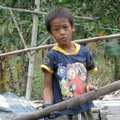 世界銀行的最新報告指出,去年(2005)為全球有史以來因天災而損失最嚴重的一年,造成超過9萬人的死亡,且有1億5000萬以上的人生活受到影響。這個負責國際金融與發展的機構表示,除非政府間建構出通盤的防災機制,以減緩並減少災害的風險,否則天災的負面衝擊將持續增加。
世界銀行的最新報告指出,去年(2005)為全球有史以來因天災而損失最嚴重的一年,造成超過9萬人的死亡,且有1億5000萬以上的人生活受到影響。這個負責國際金融與發展的機構表示,除非政府間建構出通盤的防災機制,以減緩並減少災害的風險,否則天災的負面衝擊將持續增加。
根據世界銀行和哥倫比亞大學聯合編纂的《自然災害熱點:案例研究》,2005年共發生360件自然災害,損失金額高達1590億美元——較前一年增加71%,單單卡翠娜颶風就佔1250億美元。
人口和經濟成長所造成的衝擊、快速都市化、環境惡化和氣候變遷等因子,都持續增加自然災害的發生;人類必須採取行動,否則災害風險將難以減緩。
世界銀行副總裁,專司永續發展部門的賽拉(Katherine Sierra)表示:「自然災害及其後續影響效應在21世紀,會持續演變,原因在於社會經濟特性、海岸區土地利用和氣候風險等因子的改變。」
11日發表的案例報告研究中,主要檢試三種特定災害(山崩、風暴潮和乾旱),以及發生在斯里蘭卡、肯亞塔那河流域,和委內瑞拉首都卡拉卡斯的區域性多重災害。
乾旱是對人類生活造成最大負面影響的自然災害。而針對全球山崩狀況,報告中提供一份全球性的整體評估,以及風暴潮(海嘯為主要災害)在過去200年造成數百萬人死亡,主要發生在亞洲和孟加拉共和國。
「整體而言,這份全球性分析報告提供了直接證據,顯示全面進行自然災害風險管理和預防是非常重要的,」世界銀行資深計劃官員和災害專家亞諾(Margaret Arnold)說:「考量資源有限性和關鍵基礎建設的多重功能,各層級的計劃者和決策者面對備災地區的公路、鐵路、港口建設、緊急應變、重建能力和進行中的經濟活動,都必須具備一項認知,那就是災害普遍發生在各種區域,所造成的傷害力也是廣泛深遠的。」
亞諾認為,「政府應該更了解災害之間可能的互動性,包括直接的或間接的,例如暴風雨會直接造成水患和山崩,而連續災害會間接導致自然資源耗損和削弱應變反應力。
除了這份案例研究,世界銀行另外提供一個新網站,將陸續補足更完整的後續報告。
The world suffered record economic losses from natural disasters in 2005, which killed more than 90,000 people and affected the lives of more than 150 million, the World Bank reported Wednesday. The new report from the international financial and development organization warns that the impacts from natural disasters will continue to increase unless governments develop comprehensive hazard approaches to better mitigate and reduce disaster risks.
The study "Natural Disaster Hotspots: Case Studies" was compiled by the World Bank and Columbia University and found that the 360 natural disasters in 2005 caused $159 billion in damages - a 71 percent increase over the total losses in 2004. Hurricane Katrina alone caused $125 billion of the economic losses in 2005, the report said.
According to the report, the impacts of population and economic growth, rapid urbanization, environmental degradation, and climate change are a few of the factors that will continue to fuel increasing damages from natural disasters unless something is done to reduce disaster risks.
"Natural hazards and their impacts will continue to evolve throughout the 21st Century due to changing socioeconomic conditions, coastal land use, and climatic risks," said Katherine Sierra, World Bank vice president for sustainable development.
The case studies released Wednesday examine three specific hazards - landslides, storm surges and drought - as well as regional multi-hazard situations in Sri Lanka, the Tana River basin in Kenya, and the city of Venezuelan city of Caracas.
The report finds that drought ranks as the natural hazard with the greatest negative impact on human livelihood. It includes the first comprehensive assessment of landslides at the global scale along with information on sea surges, which are the main killer associated with storms. Storm surges have led to several million deaths over the past two centuries, primarily in Asia and Bangladesh.
"Taken together, the global analysis and case studies provide strong evidence of the importance of employing proactive, comprehensive approaches in disaster risk management," said Margaret Arnold, World Bank senior program officer and disaster specialist. "Given resource constraints and the multiple roles played by key infrastructure - such as roads, railroads, and ports in disaster preparedness, emergency response, reconstruction, and ongoing economic activity - it is vital that planners and decision makers at all levels have a sound appreciation of the hazards prevalent in their specific regions on concern, along with associated vulnerabilities."
Arnold added that governments need to understand the "the potential interactions among these hazards, whether direct - for example, storms that initiate both floods and landslides - or indirect - such as consecutive hazards that deplete natural resources and strain response capacities."
In addition to the report and case studies, the World Bank has launched a new Web site to complement its findings.






